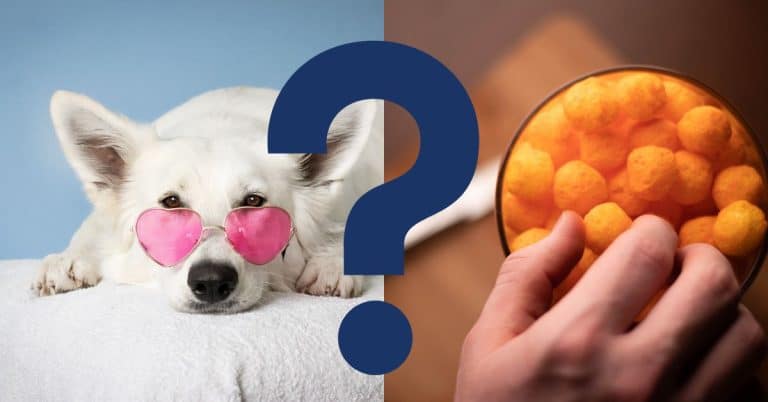Can Dogs Eat Black-Eyed Peas? A Vet’s Opinion

Legumes are known as black-eyed peas and are distinguished by their white color and black “eye” on the inner curve. But can you feed black-eyed peas to your dog?
Black-eyed peas are safe for dogs to eat in moderation. Although they should be boiled sufficiently to facilitate digestion, these legumes are an excellent source of protein and fiber for dogs. Onions, garlic, and excessive salt should not be used as seasonings, as they might harm dogs. Before introducing new foods to your dog’s diet, always check with a veterinarian to be sure they’re safe for their particular health requirements.
Benefits of black-eyed peas for dogs
When dogs consume black-eyed peas in moderation, they can benefit from several factors. Several benefits are as follows:
Rich In Protein
Black-eyed peas are a good source of plant-based protein, which is necessary for the growth of muscles, the formation and repair of tissues, and the maintenance of a dog’s skin and coat in good condition.
High In Fibre
Black-eyed peas’ high fiber content helps dogs digest food and maintain regular bowel movements. It can maintain a healthy digestive system and help prevent constipation.
Vitamins And Minerals
Black-eyed peas include a variety of vitamins and minerals, including potassium, vitamin A, vitamin K, folate, and vitamin K. These nutrients support many physiological functions and contribute to general health in dogs.
Low In Fat
Black-eyed peas are low-fat, suitable for dogs trying to lose weight or with specific medical problems that call for a low-fat diet.
Antioxidants
They contain antioxidants, which can support dogs’ immune systems by assisting in the neutralization of damaging free radicals in the body.
Complex Carbohydrates
Black-eyed peas provide a variety of complex carbohydrates that give dogs a consistent and long-lasting energy supply and support the maintenance of their activity levels.
Supports Heart Health
By helping to control canine blood pressure, the potassium in black-eyed peas can support heart health.
Despite these advantages, it’s essential to remember that moderation is the key. A dog’s diet may become unbalanced or cause digestive issues if they consume too much food. Black-eyed peas should be boiled and served simply without any seasonings, onions, or garlic, as these ingredients might harm dogs. Additionally, before making any significant dietary changes for your dog, always speak with a vet to ensure they align with their particular health requirements and any pre-existing medical concerns. Because each dog is unique, what may be appropriate for one dog may not be appropriate for another.

How to safely give black-eyed peas to dogs
To feed black-eyed peas to dogs without risk, adhere to the following rules:
Cook Thoroughly
Before serving black-eyed peas to your dog, ensure they are well cooked. Raw or undercooked legumes can be challenging for dogs to digest and cause gastrointestinal problems.
Simple Preparation
Feed your dog plain, unseasoned black-eyed peas. Salt, onions, garlic, and other seasonings should not be used since they may hurt dogs.
Modest Portions
Add modest amounts of black-eyed peas to your dog’s food gradually. Doing so allows you to monitor how well your dog tolerates the new diet and helps avoid intestinal problems.
Watch For Allergies
After introducing black-eyed peas, look for any allergies or unfavorable reactions or symptoms. Itching, swelling, vomiting, and diarrhea are examples of allergic reactions. Consult your veterinarian and immediately cease feeding black-eyed peas if these symptoms appear.
Mix With Everyday Food
Black-eyed peas can be used as a treat or supplement to your dog’s regular meal by mixing them in. They will acquire a balanced diet if combined with their regular diet.
Consider Mashing
Before serving, you can softly puree or mash the black-eyed peas to help digestion and make it easier for your dog to ingest.
Feed In Moderation
While black-eyed peas provide several nutritional advantages, they should only be used in moderation as part of your dog’s complete and balanced diet. To avoid any nutritional consumption abnormalities, moderation is essential.
Consult Your Vet
Always consult your veterinarian before introducing new food—including black-eyed peas—to your dog’s diet. They can offer specialized advice based on your dog’s age, breed, size, health, and dietary requirements.
Use Canned Peas
Using canned black-eyed peas is preferable to dried ones because they are lower in sodium and do not have any additional flavors or preservatives. Before giving your dog dried black-eyed peas, ensure they have been wholly boiled, soaked, and washed.
Avoid Overfeeding
Giving dogs too many black-eyed peas can cause them to have too much gas or an upset stomach. Follow your veterinarian’s advice regarding portion sizes.
Remember that each dog is an individual, so what may be suitable for one dog may not be for another. Always put your dog’s health first, and if you have any worries or queries about introducing new items into their diet, speak with a veterinarian.
Will black-eyed peas make a dog sick?
When adequately prepared and given in moderation, black-eyed peas are generally safe for most dogs. Nevertheless, certain dogs could be allergic or sensitive to specific foods. Here are some possible causes of a dog’s illness from black-eyed peas:
Allergic Reactions
Black-eyed peas may cause allergy reactions in some dogs since they can be allergic to particular foods. Itching, skin rashes, ear infections, vomiting, and diarrhea are typical symptoms of food allergies in dogs.
Gastrointestinal Upset
Dogs who abruptly consume large quantities of black-eyed peas or unfamiliar meals may experience digestive disturbance, manifesting as symptoms like diarrhea, gas, or bloating.
Seasonings & Additives
Black-eyed peas can be hazardous to dogs and cause several health problems, including anemia if seasoned with onions, garlic, or other harmful additives.
Undercooked Peas
Black-eyed peas served to raw or undercooked dogs may be difficult for them to digest and may result in gastrointestinal issues.
Portion Size
Overfeeding black-eyed peas, especially if offered as treats or snacks in excessive amounts, might cause an upset stomach or contribute to weight gain.
Health Disorders
Due to the nutritional value of black-eyed peas, dogs with certain medical disorders, such as pancreatitis, diabetes, or kidney disease, may not tolerate them well.
Remember that every dog is different, so what could be risk-free for one dog may not be for another. Put your dog’s health and well-being first, and always seek the advice of a veterinarian for individualized nutritional advice.
Can Dogs Eat Black-Eyed Peas Variations?
Certain varieties of black-eyed peas are safe for dogs to consume as long as they are prepared and served in a dog-friendly way. Here are several black-eyed pea varieties that can be suitable for dogs:
Cooked Black-Eyed Peas
Black-eyed peas wholly cooked without any seasonings, onions, garlic, or other toxic substances are safe for dogs.
Mashed Black-Eyed Peas
Black-eyed peas mashed or lightly pureed can be easier for dogs to ingest and digest.
Black-Eyed Peas In A Can
Pick low-sodium varieties without additional flavors or preservatives if you use black-eyed peas in a can. Before giving the peas to your dog, always rinse them.
It’s crucial to remember that not all dogs will tolerate or respond the same way to different foods. What is appropriate for one dog may not be for another. Always put your dog’s health first, and if you have any questions or concerns, speak with your veterinarian for specific guidance.

Vet’s Summary
The safety and advantages of feeding black-eyed peas to dogs are covered in the article. It emphasizes that black-eyed peas can be a wholesome supplement to a dog’s diet when prepared correctly and delivered plain without any unhealthy additives. They have a high protein, fiber, vitamin, and mineral content and provide several health benefits, including better digestion and heart health. It does, however, issue a warning that not all dogs may accept black-eyed peas equally and that some may be allergic to legumes, which could result in gastrointestinal distress or other adverse effects. It suggests starting the dog with black-eyed peas in tiny doses and talking to a vet before adding them to the dog’s diet to safeguard the dog’s health.
Regardless of whether the owner chooses to add black-eyed peas to the dog’s food, given the potential digestive benefits of black-eyed peas, it is advised to provide the dog with probiotic supplements. Probiotics can improve the dog’s overall gastrointestinal health, help digestion, and encourage a healthy balance of gut bacteria. Probiotic pills may be beneficial if the dog has any digestion problems, allergies, or food sensitivities. Before giving a dog any supplements, it is essential to speak with a vet to identify the right probiotic kind and dosage for that dog’s specific needs. Incorporating probiotic supplements with the nutritional advantages of black-eyed peas can improve the dog’s digestive health and boost its general health and energy.
Videos to watch
If you are wondering what related foods are good to give your dog, watch this:
And if you want to know what a dog can NOT eat, watch this:






